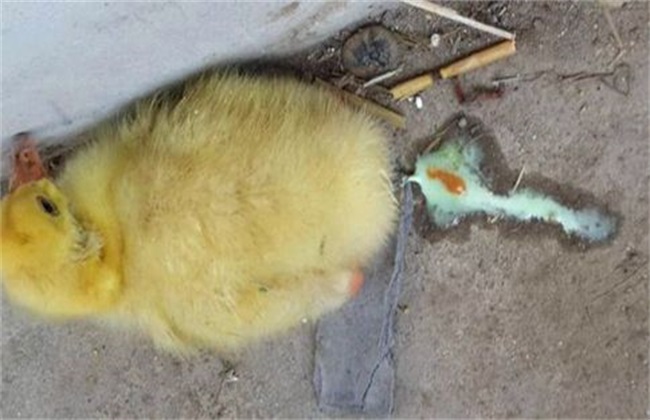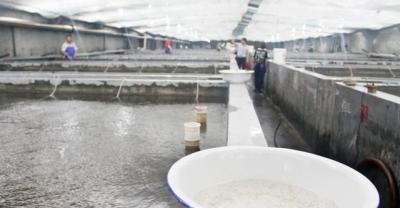infectious diseases Learn more about infectious diseases
-
Questions and answers on Gardnerellosis of fox mink

1 how to make sure that the fur animal has an infectious disease? A: ① infectious diseases are caused by pathogenic microorganisms, and each infectious disease has its own specific pathogenic microorganisms. For example, canine distemper is caused by canine distemper virus infection of paramyxoviridae, fox encephalitis is caused by canine adenovirus infection, and mink Aleutian disease is caused by Aleutian virus infection of paramyxovirus family. Pasteurellosis is caused by Pasteurella multocida infection, which needs to be confirmed by pathogen isolation and identification, immunological diagnosis and so on. ② infectious disease equipment
2019-01-16 -
What are the common animal diseases of type I, II and III, respectively?

Animal diseases refer to animal infectious diseases and parasitic diseases. According to the degree of harm of animal diseases to aquaculture production and human health, the animal diseases managed by the Law of the people's Republic of China on Animal epidemic Prevention are divided into the following three categories: class I diseases, which refer to human beings.
2020-11-11 Common one two three types animals epidemic diseases respectively including -
Prevention and treatment of Infectious bursal Disease in chickens

Prevention and treatment of Infectious bursal Disease in chickens
2018-07-04 -
Early spring chicken infectious laryngotracheitis should pay attention to, how to treat what drugs you need to know!

Infectious laryngotracheitis is an acute and contagious upper respiratory infectious disease caused by infectious laryngotracheitis virus. So here to remind the majority of farmers, early spring chicken infectious laryngotracheitis should pay attention to, how to treat what drugs you need to know!
2020-11-11 Early spring chicken infectious larynx tracheitis to pay attention to how treatment -
Prevention and treatment of infectious laryngotracheitis in chickens

Prevention and treatment of infectious laryngotracheitis in chickens
2018-06-29 -
Prevention and treatment of infectious bursal disease in cultured peacocks

Pathogen: the disease virus is infectious bursal virus, that is, infectious bursitis, also known as Campbell's disease, bursitis on the cavity. Pathogen is an acute infectious disease caused by double-stranded RNA virovirus and double-stranded RNA virus belonging to infectious bursal virus. The arrival of the virus
2020-11-08 Aquaculture peacock infectious Fabricius bursa disease control pathogen -
What is the symptom of chicken infectious bronchitis? How to treat it? What kind of medicine should I use?

Infectious bronchitis is an acute and highly contagious respiratory infectious disease in chickens caused by infectious bronchitis virus. What are the symptoms of chicken infectious bronchitis? How to treat it? What kind of medicine should I use? 1. Due to climate and various reasons, eggs
2020-11-11 Chicken contagious bronchitis symptoms yes what how -
Infectious gonadal gastritis in chickens and its prevention and control measures

In recent years, an infectious disease characterized by poor growth, emaciation, poor uniformity, enlarged glandular stomach such as milky globule, glandular gastric mucosal ulcer, exfoliation and myogastric erosion has caused great losses to the breeding industry. This disease is called infectious glandular gastritis. First, the pathogen of the disease has not been clearly stated. The pathogen of the disease is a coronavirus, and other viruses are also associated with the disease, such as low-fiber diet, mycotoxin, reovirus, tumor-induced virus, avian reticuloendotheliosis virus, polyomavirus, adenosis.
2019-01-15 -
Common infectious diseases of ducks in summer

Common infectious diseases of ducks in summer
2019-07-05 -
Viral disease: infectious hematopoietic tissue necrosis of fish

[pathogen] the pathogen of infectious hematopoietic tissue necrosis in fish is infectious hematopoietic tissue necrosis virus (IHNV). [symptoms and pathological changes] the diseased fish begin to swim slowly, float downstream, then shake and swim, then float and turn, and often die shortly after intense swimming. The diseased fish have black body color, exophthalmos, dilated abdomen, hyperemia at the base of the fin, and a long, thick white mucus stool is often dragged on the anus. Autopsy showed that there was a large amount of stagnant water in the abdominal cavity, lighter color of liver, spleen and kidney, intestinal bleeding, oral wall and skeletal muscle.
2019-01-16 -
Causes and Control methods of Infectious larynx and trachea in White-feathered broilers

Infectious laryngotracheitis is an acute respiratory infectious disease caused by herpesvirus. Infectious laryngotracheitis is characterized by dyspnea, coughing and exudation containing blood. Swelling, bleeding and erosion of laryngeal and tracheal mucosa were found during autopsy.
2020-11-08 Breeding white feathers broilers infectivity throat trachea causes and -
Diagnosis and treatment of infectious serositis in ducks

Duck infectious serositis is a contagious, acute or chronic infectious disease caused by Riemerella anatipestifer, which mainly affects 8-week-old ducklings. The disease is characterized by fibrinous pericarditis and fibrinous pneumocystitis. It is an infectious disease that seriously harms ducklings. (1) the most acute clinical symptoms of the affected ducks died suddenly without seeing the symptoms. The main clinical manifestations of acute cases are: depression, lack of food, refusing to eat, lying together, weak legs, unwilling to walk, ataxia, head upward and backward when lying on the ground.
2019-01-16 -
Infectious Canine Hepatitis and its Prevention and Cure

Canine infectious hepatitis is an acute septic infectious disease caused by canine infectious hepatitis virus. The susceptible animals are young dogs under 1 year old, often showing acute necrotizing hepatitis. The disease occurs all over the world and is a common canine disease. At the initial stage of the disease, the virus mainly exists in the blood of diseased dogs, and then appears in a variety of secretions and feces, and excreted out of the body, causing environmental pollution, and can be excreted with urine from 6 to 9 months after recovery. Sick dogs and poisoned dogs are the source of infection of the disease. Healthy dogs are mainly eliminated.
2019-01-11 -
Prevention and treatment of Avian Infectious bronchitis

Prevention and treatment of Avian Infectious bronchitis
2018-06-29 -
Infectious Diseases to be prevented in Goat farming

Infectious Diseases to be prevented in Goat farming
2018-07-09 -
Drugs for infectious diseases of respiratory system in pigs

Infectious diseases of pig respiratory system are common diseases in pig production, most of which are rhinitis and pneumonia. the common symptoms are cough, sneezing and dyspnea. Pigs of different ages and breeds can be infected, and the speed of infection is fast and the number is large. Infectious diseases of pig respiratory system have the following characteristics: first, the pathogen is complex, often not caused by the same or several bacteria, but closely related to a variety of factors in the environment, only when certain environmental, management and feeding factors change.
2019-01-16 -
Occurrence and control of epidemic diseases in pigs at different feeding stages

The incidence of swine fever, swine erysipelas and porcine lung disease are collectively referred to as the three major infectious diseases of pigs. In China, the total mortality rate of infected pigs accounts for about 8% of the total, and the mortality rate of pigs in areas with better prevention and control is also 5%. Therefore, the level of prevention and control of pig disease should be improved. If the total mortality rate of pigs can be reduced by one percentage point every year, which is equivalent to an increase of 5 million pigs, what a great wealth it is. According to relevant statistics, among the causes of death of pigs,
2019-01-16 -
Prevention and treatment of infectious bursitis in chickens

(1) strengthen feeding management and hygiene measures to strengthen the feeding and management of chickens, maintain the interval between chicks, implement a full-in-all-out breeding system, do a good job in cleaning and disinfection, reduce and avoid various stress factors, and so on. These general principles for the prevention and control of infectious diseases are very important for the prevention and control of infectious bursitis. (2) Immunization enables chickens to acquire specific resistance through effective vaccination, which is the most important measure to prevent infectious bursitis. 1. Improve the antibody of breeder chickens
2019-01-16 -
How do breeding friends judge chicken infectious synovitis?

How about the prevention of chicken infectious synovitis? 2017-12-14 Avian doctor Little Prince Chicken Infectious synovitis, also known as synovial cyst mycoplasma, is infected by Mycoplasma synovium.
2019-02-26 -
Occurrence and control of epidemic diseases in different feeding stages of pigs

The incidence of swine fever, swine erysipelas and porcine lung disease are collectively referred to as the three major infectious diseases of pigs. In China, the total mortality rate of infected pigs accounts for about 8% of the total, and the mortality rate of pigs in areas with better prevention and control is also 5%. Therefore, the level of prevention and control of pig disease should be improved. If the total mortality rate of pigs can be reduced by one percentage point every year, which is equivalent to an increase of 5 million pigs, what a great wealth it is. According to the relevant statistics,
2019-01-16
